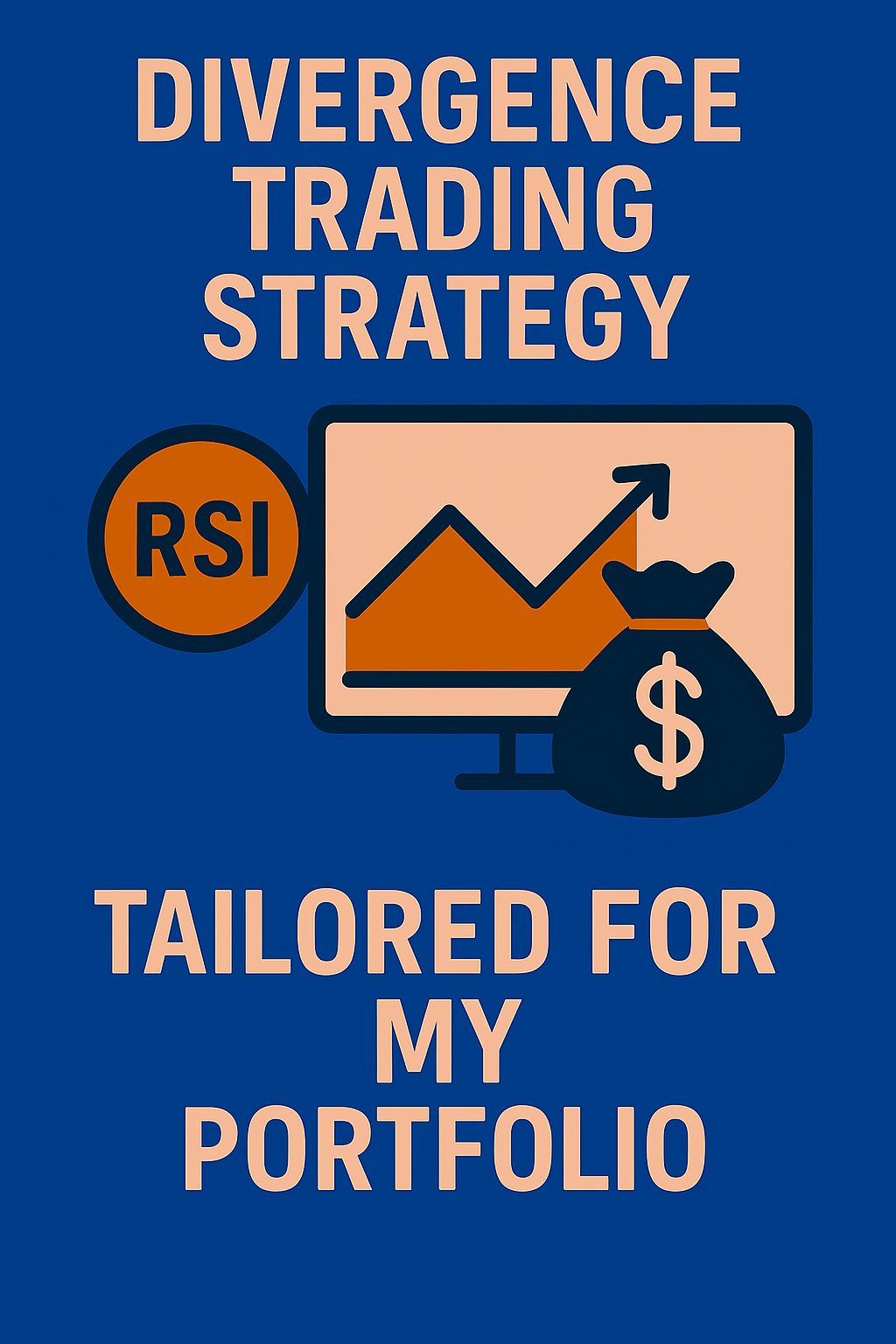Introduction
Divergence trading is a powerful technique that helps traders identify trend reversals and continuations by analyzing price action in relation to momentum indicators. A well-structured divergence strategy can significantly improve trading accuracy and profitability.
In this comprehensive guide, we will explore:
✔ A custom divergence trading strategy tailored for your portfolio
✔ How to apply divergence to different asset classes
✔ Step-by-step strategy implementation
✔ Risk management techniques to protect capital
✔ External resources for further learning
For additional insights, check out Sniper Trades’ divergence trading strategies and StrategyQuant’s divergence detection blocks for expert perspectives on divergence techniques.
1. Understanding Divergence Trading
A. What Is Divergence?
Divergence occurs when the price action of an asset moves in the opposite direction of a momentum indicator, such as the Relative Strength Index (RSI), Moving Average Convergence Divergence (MACD), or Stochastic Oscillator.
✔ Signals weakening momentum – Divergence suggests that the current trend may be losing strength.
✔ Can indicate trend reversals or continuations – Traders use divergence to anticipate market movements.
✔ Works across different timeframes – Divergence can be spotted on hourly, daily, or weekly charts.
B. Why Is Divergence Important for Your Portfolio?
✔ Helps identify high-probability setups – Divergence provides early signals for potential price movements.
✔ Enhances risk management – Traders can use divergence to confirm entry and exit points.
✔ Works well with other technical indicators – Combining divergence with support and resistance levels improves accuracy.
For more details, visit Sniper Trades’ divergence trading strategies for insights into divergence trading setups.
2. Custom Divergence Trading Strategy for Your Portfolio
A. Selecting the Right Indicators
✔ RSI Divergence – Ideal for spotting trend reversals.
✔ MACD Divergence – Helps confirm momentum shifts.
✔ Stochastic Divergence – Useful for identifying overbought and oversold conditions.
B. Identifying Key Support & Resistance Levels
✔ Use historical price data to mark strong support and resistance zones.
✔ Monitor Asian session range before the London market opens.
C. Entry & Exit Rules for Divergence Trading
✔ Buy when price forms bullish divergence – Confirm with volume and momentum indicators.
✔ Sell when price forms bearish divergence – Ensure strong bearish momentum.
For additional insights, check out StrategyQuant’s divergence detection blocks for expert perspectives on divergence techniques.
3. Risk Management in Divergence Trading
A. Setting Stop-Loss Orders
✔ Place stop-loss orders just below support or above resistance.
✔ Use a risk-reward ratio of at least 1:2 for optimal trade management.
B. Managing Position Sizes
✔ Adjust position sizes based on volatility levels.
✔ Use trailing stops to lock in profits during strong trends.
C. Avoiding False Signals
✔ Combine divergence with moving averages to filter false signals.
✔ Look for confluence with other technical indicators before entering trades.
For more insights, check out Trade Ideas’ guide on optimizing trade strategies for expert perspectives on risk management techniques.
Final Thoughts: Mastering Divergence Trading for Your Portfolio
A custom divergence trading strategy tailored for your portfolio can significantly enhance trading accuracy and profitability. By following technical signals, volume confirmation, and strategic trade execution, traders can maximize their success in the market.
Would you like a detailed backtesting guide or advanced divergence techniques? Let’s discuss!
For further reading, visit Sniper Trades’ divergence trading strategies and StrategyQuant’s divergence detection blocks for expert perspectives on divergence techniques.

No responses yet